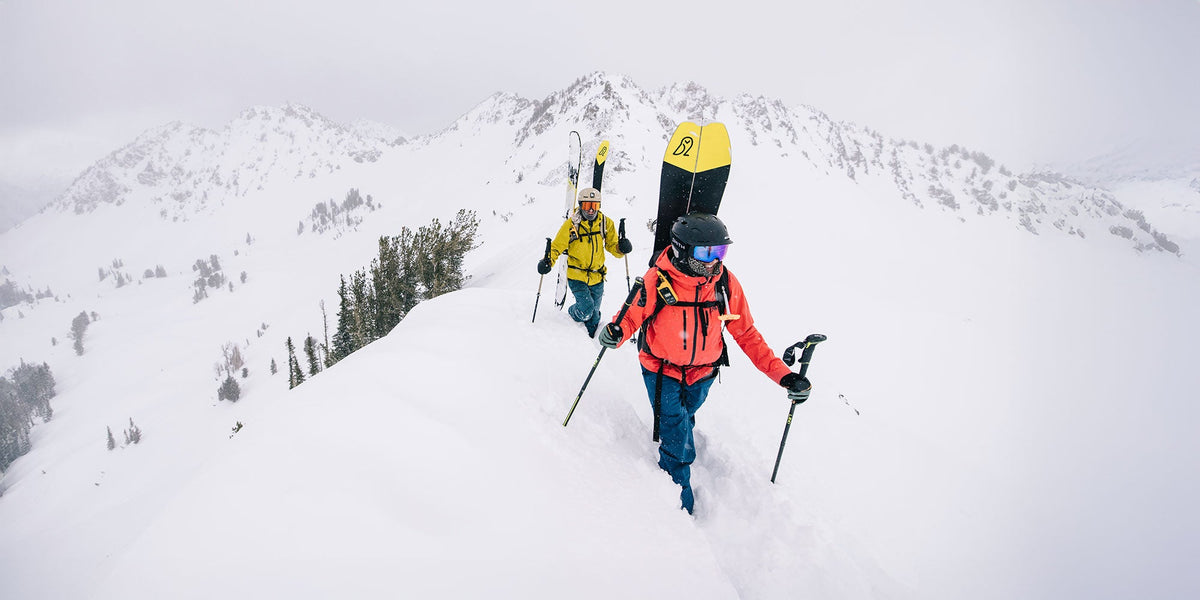
How To Pack For Backcountry Hut Trip
|
|
In our current, ultra-tethered world, there are just a few places left that allow us to fully disconnect from the constant stream of texts, emails, calls, slacks, tweets, posts, likes, meetings, and mentions. Technology has gifted us the ability to work from almost anywhere, which simultaneously means it’s almost impossible to unplug.
One exception is a backcountry hut trip, without wifi and cell service. There are dozens of huts scattered across the Western US, you just have to know where to look. Popular ones include 10th Mountain Division and San Juan Huts in Colorado, Clair Tappaan, Ostrander, and Pear Lake in California, Sun Valley Yurts in Idaho, Bell Lake, Jewel Basin, and Mt. Zimmer in Montana, Teton Backcountry in Wyoming, and Tilly Jane and Tam Rim in Oregon. After years of hut trips, I’ve been fortunate to visit almost all of the huts above, opening up the door to look further off the beaten path.
This January I organized a four-day trip to the Wallowas in eastern Oregon, bringing 10 close friends with me. After weeks of planning, we drove five hours to the trailhead and hauled our gear nine miles into the yurt, following a map from the owners. Somewhere along the journey we lost service, which is a huge privilege, as far as I’m concerned. Away from the dopamine spikes from ceaseless phone notifications, my mind started to slow down, my body began to relax, and I felt much more present.
After a few hours of steady climbing, we arrived at the yurt, perched on a snowy ridge at 7,000 feet. Inside we found the basic amenities: bunk beds, drying lines, and a small wood stove upstairs, propane stoves for cooking, pots and pans, coolers to keep food fresh, chairs, and an area for hanging downstairs. Simple, but all we needed. The yurt afforded us the freedom to ski all day in any condition, then return home, dry out, eat, and sleep, before doing it all again the next day.
Fortunately, packing for a backcountry hut trip isn’t as hard as you might think. My main piece of advice is that less is more. Many first time hut goers pack way too much. They think they want all the comforts at home, not realizing how much this will weigh them down. Bringing less stuff–although still enough to be safe–often allows you to do more.
Ski Gear: Everyone in our group brought along an avalanche beacon, shovel, probe, and radio for group safety and communication. Skis or splitboard, boots, poles, and skins for uphill travel. Helmet, goggles, first aid, headlamp, water bottle with electrolytes, snacks, and a small repair kit specific to their ski gear. I carry on all of these items on all of my ski tours, whether I’m out for a sidecountry lap, a full day in the alpine, or multi-day adventures like this one. The only difference is that I bring a little extra water, snacks, and a larger first aid kit for the bigger trips.
Clothes: The simplest way to think about packing clothes for a hut is two dedicated kits: one for touring, one for the hut. Every day you’ll flip back and forth, letting one dry out while the other is in use. While touring I wear wool baselayers, a light synthetic midlayer, and bibs and a waterproof shell. I carry a couple pairs of gloves in case one gets wet, a warm puffy for lunch breaks and worst case scenarios, a beanie, buff, baseball hat, sunscreen, and sunglasses, in case it is sunny. Back at the yurt I swap into my apres kit: a fresh set of baselayers, insulated pants, fleece midlayer, big puffy, wool socks, and down booties, to keep my feet warm. I avoid cotton at all costs, because it doesn’t insulate when sweaty and wet.
Yurt Accessories: Most huts and yurts do not have running water, so you’ll need to chop firewood and stoke the fire to melt snow for drinking water. I brought a good pair of leather gloves and a spare lighter for this purpose. I also brought a 15-degree sleeping bag and inflatable pillow for sleeping, while a sleeping pad was provided, which is common at most backcountry huts. Other items that made the experience better were recovery travel packs, a lightweight speaker, earplugs and eye mask for better sleep, baby wipes to clean my face each day, an extra battery pack to charge a phone at night, toothbrush and toiletries, and a massage gun to help tired legs.
After you have double checked the list and thrown all of your gear into a duffel, try to remind yourself that beyond any single piece of gear, the most important thing to remember is a good attitude. When you’re in the backcountry for multiple days on a hut trip, things inevitably will go wrong. They always do, even for the most prepared groups. A calm demeanor with a problem-solving mindset is the best way to approach the twists and turns– and that those moments are the biggest lessons, too.


